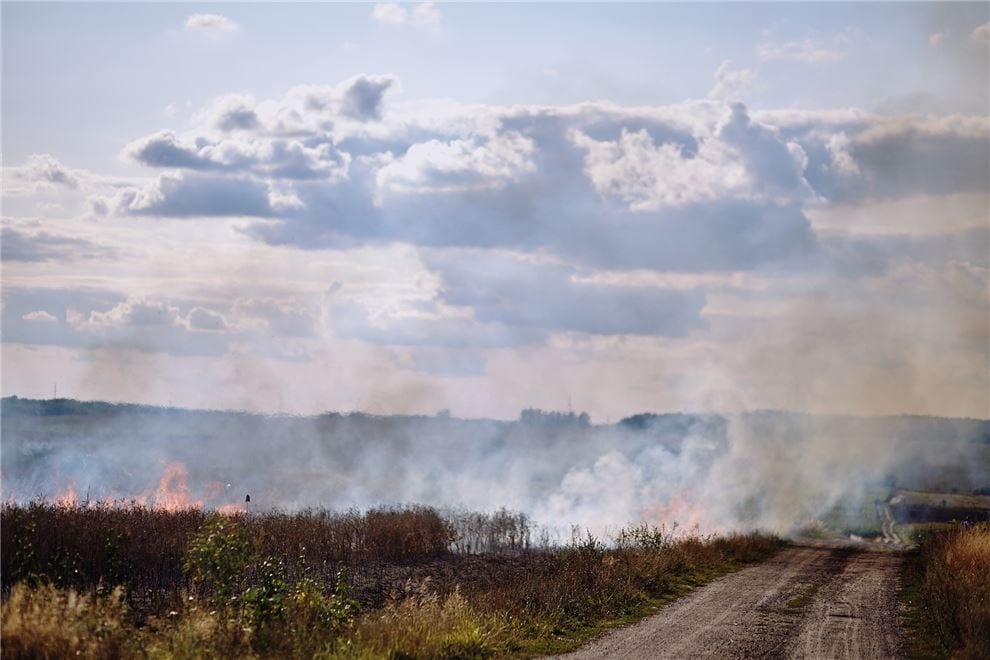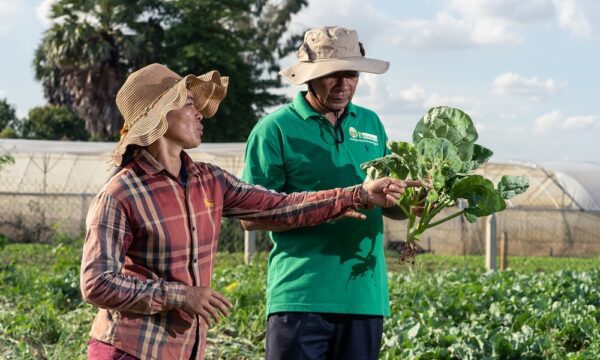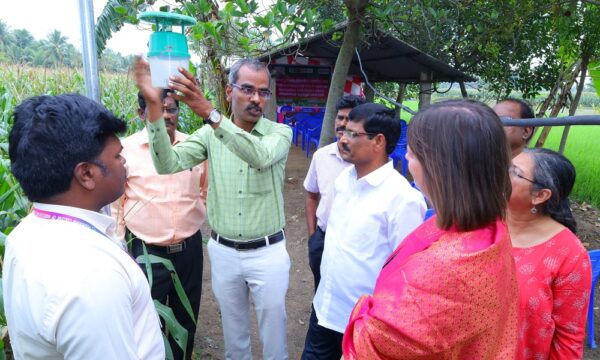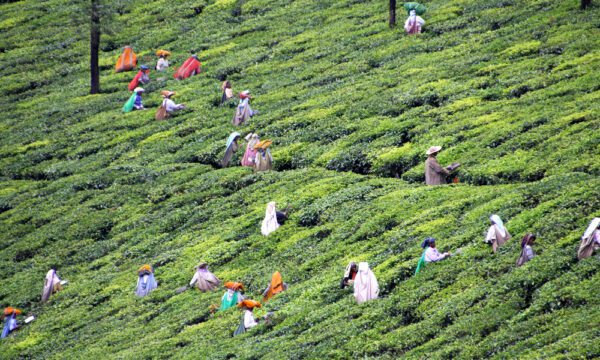
20 August 2019 – Adoption of alternative farming practices can increase farmer profits and avoid burning crop residue, according to a new paper co-authored by CABI scientist, Mr Arun Jadhav. Published in the leading journal, Science, the paper states that alternatives to crop reside burning – a practice that clears fields of grain harvest stubble but contributes to air pollution – can yield significant improvements in air quality.
Results show that ‘Happy Seeder’ based systems can be more profitable on average than alternative farming practices, including burning. The Happy Seeder is a system based on a tractor-mounted machine that cuts and lifts straw, sows seed, then deposits the straw over the sown area as mulch. Baling – the cutting and compressing of stubble – while on average less profitable than Happy Seeder options, shows equivalent profits to burning.
The maximum profit the average farmer can gain by switching from burning to a Happy Seeder or baling system is 20,925 INR/ha (39% increase) or 14,349 INR/ha (27% increase), respectively. However, increases are not guaranteed, and skepticism about alternatives is high.
Although intentional use of fires to transform land has decreased globally, particularly among highly capitalized countries through regulatory and market-oriented approaches, regulatory strategies have been less effective in southern and eastern Asia, including northwestern India. The reluctance to enforce existing policies arises, in part, from the belief that profitable alternatives to burning crop residue do not exist.
With the field burning season soon to start, this paper comes at a critical time. Air pollution is India’s second biggest risk to human health with risks peaking in October and November when rice crop residences are burned in agricultural areas. Seasonal smog imposes substantial costs, causing major transportation disruptions and even school closures.
This new piece of research clarifies the business case for alternative practices, identifies remaining uncertainties, and discusses approaches to increase their widespread adoption. It synthesizes emerging evidence on alternatives to the harmful practice of field burning.
Mr Jadhav is a CABI project manager working on ICT projects in India. He comments: “I’m grateful to The Nature Conservancy for inviting me to be part of their expert review workshop, which allowed me to contribute to this paper. Farmers in northern India are heavily reliant on rainfall, which can be erratic due to climate change. Reductions in ground water levels give them a narrow window between harvesting wheat and sowing rice – only 10-20 days. The easiest and quickest way to get rid of crop residue is to burn it, but this leads to high levels of pollution in neighboring areas. This paper offers ideas for adopting alternative farming practices to help overcome the challenges of crop burning.”
Agricultural fires continue to be a challenge in many parts of the world. This piece of research suggests that India has an opportunity, through coordinated public and private actions, to reduce burning, increase incomes and transition to more sustainable agriculture while addressing the urgent problem of seasonal air pollution.
Additional information
Full paper reference
P. Shyamsundar, N. P. Springer, H. Tallis, S. Polasky, M. L. Jat, H. S. Sidhu, P. P. Krishnapriya, N. Skiba, W. Ginn, V. Ahuja, J. Cummins, I. Datta, H. H. Dholakia, J. Dixon, B. Gerard, R. Gupta, J. Hellmann, A. Jadhav, H. S. Jat, A. Keil, J. K. Ladha, S. Lopez-Ridaura, S. P. Nandrajog, S. Paul, A. Ritter, P. C. Sharma, R. Singh, D. Singh, R. Somanathan, ‘Fields on fire: Alternatives to crop residue burning in India’, Science, 9 Aug 2019: Vol. 365, Issue 6453, pp. 536-538 DOI: 10.1126/science.aaw4085
This paper is available here: https://science.sciencemag.org/content/365/6453/536
Related News & Blogs
CABI and ICAR sign five-year work plan to strengthen scientific and technical cooperation for food security
18 February 2025




